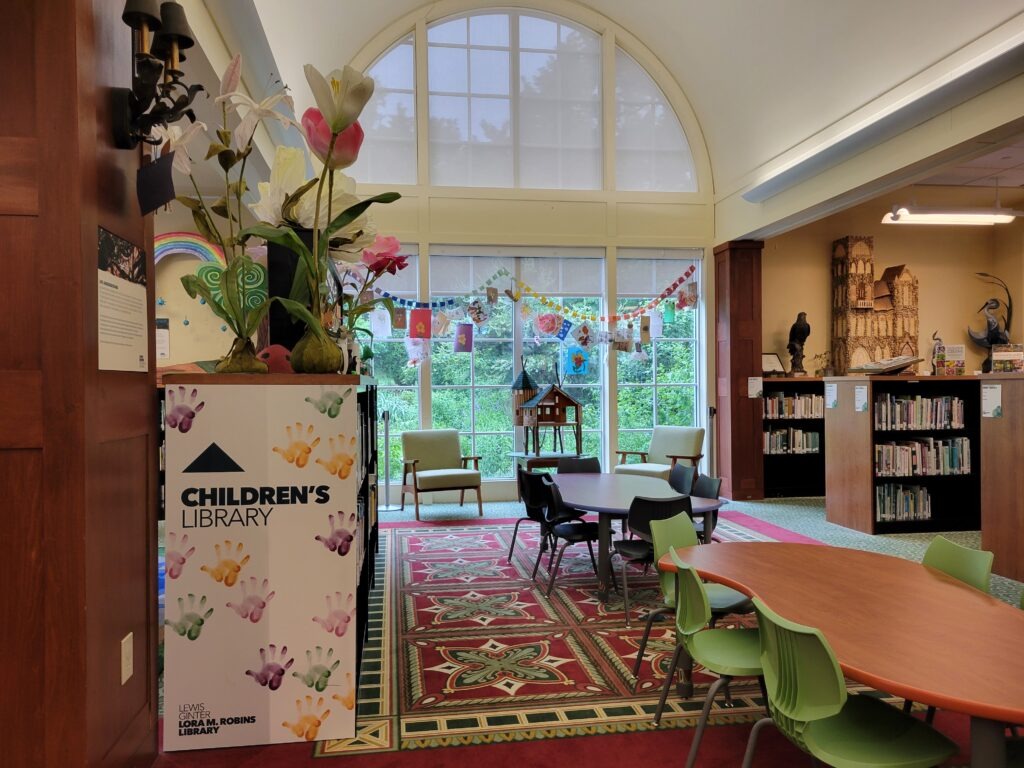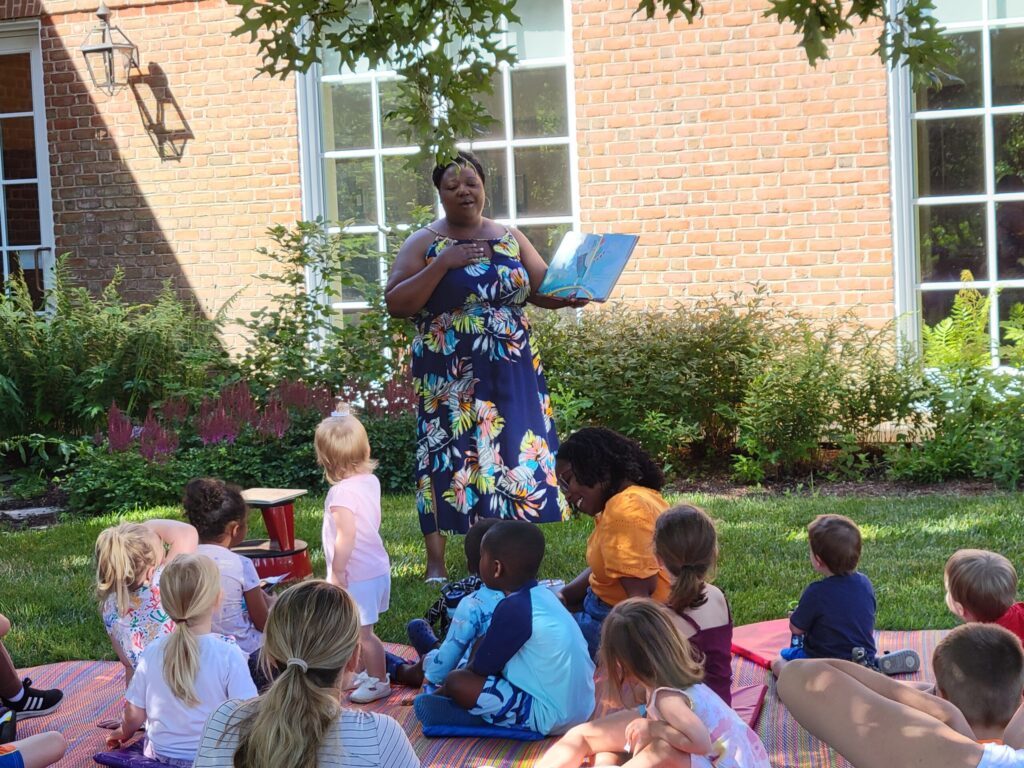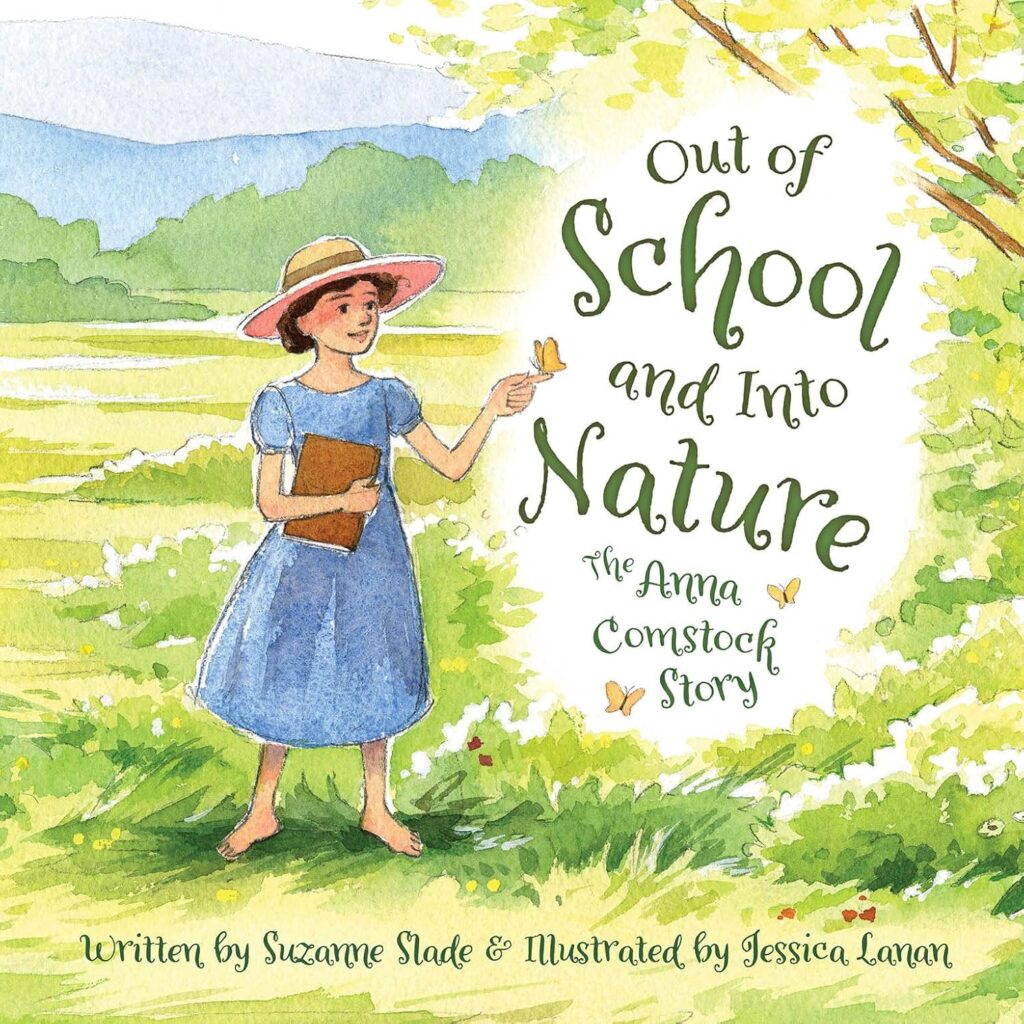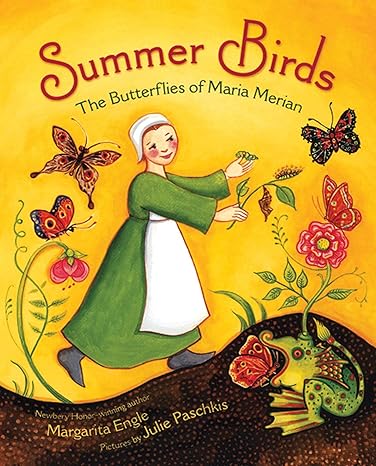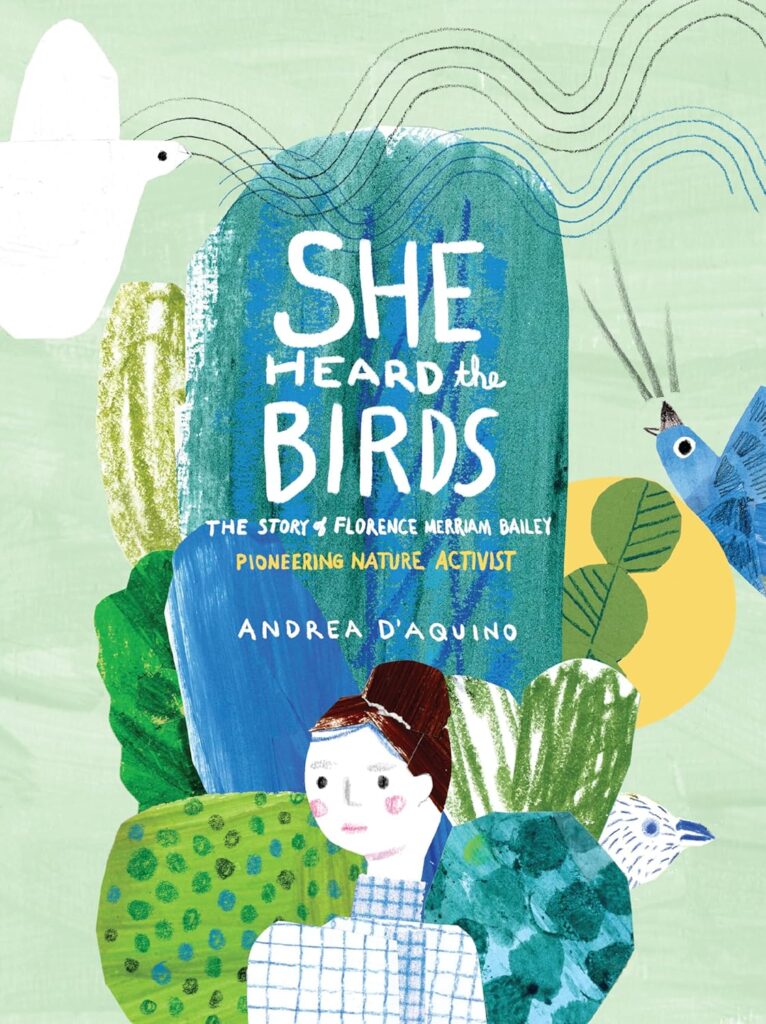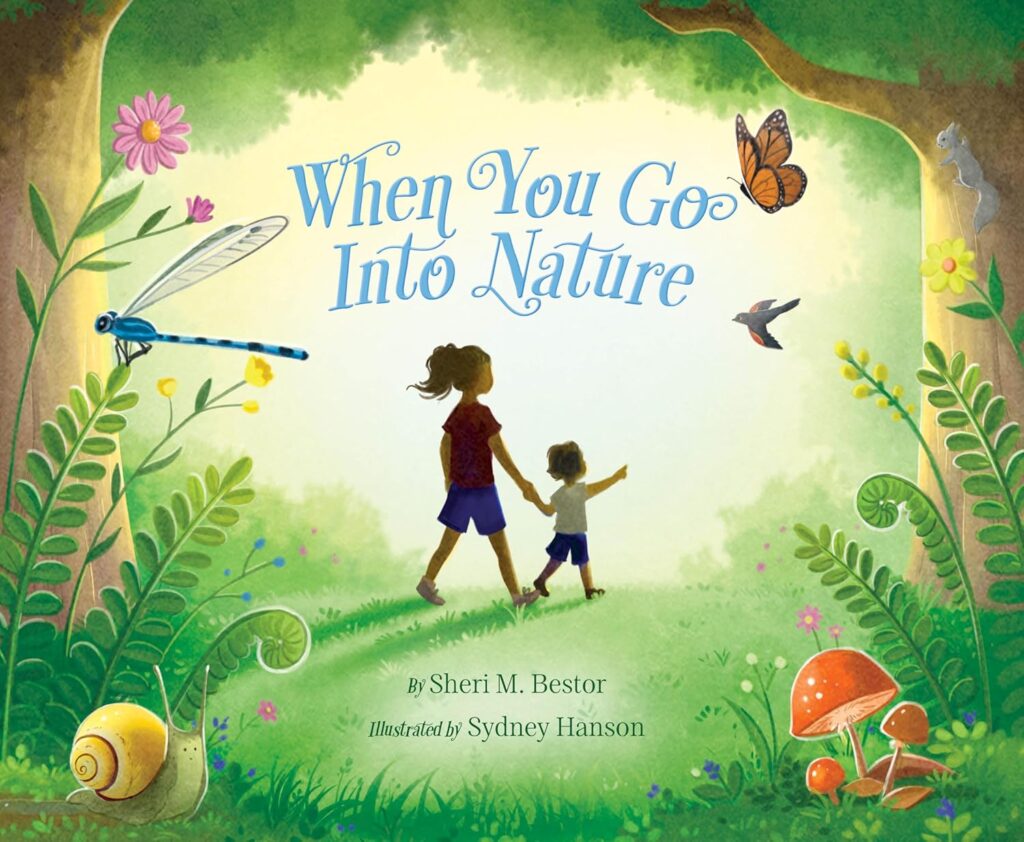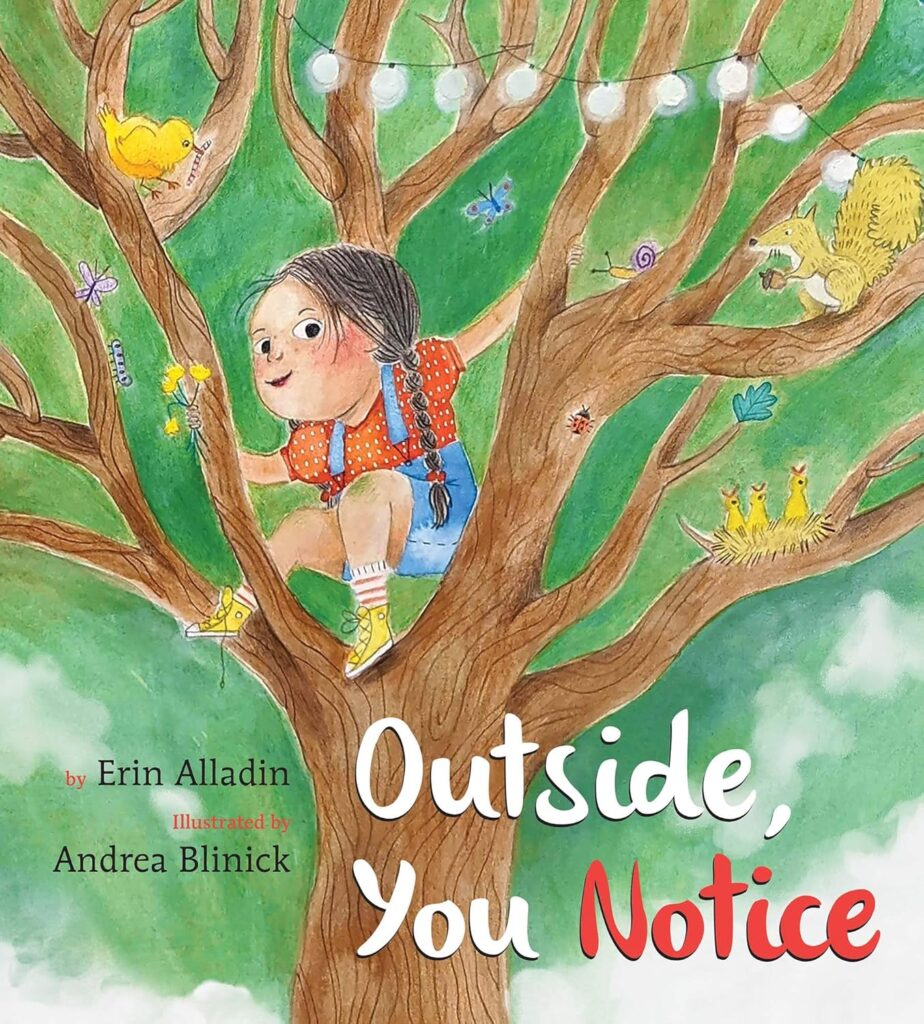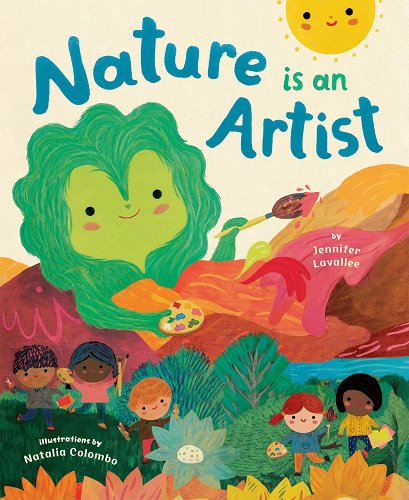The Benefits of Storytime at the Garden
Libraries have long been places of connections: readers connecting with books, neighbors meeting others in the community, and children and families engaging in educational opportunities. The Robins Library, the special botanical library at Lewis Ginter Botanical Garden, connects patrons to horticultural information, literature, botanical art and garden history. Currently, Women’s Work: The Lee Park Collection exhibit is on display showcasing a WPA project from the late 1930’s aimed at preserving the native flora and documenting the park’s creation.
In order to make this unique exhibit more accessible to children, I created storytimes centered around the themes of botanical illustration, nature observation, and the appreciation of nature and art. The picture books featured the beauty of nature and the power of observation and exploration in a natural space, while craft activities included tracing, drawing and open creation to actively engage children with the nature around them and in the garden. Natural materials like twigs, leaves and pinecones inspired imaginative process art. Children are naturally curious to learn about their world, and research shows that fostering a love of nature provides cognitive and developmental benefits (Adams & Savahl, 2017).
Children’s literature often features beautiful artwork, and the early practice of learning to read by looking at pictures and identifying shapes and colors is itself an early form of art appreciation and literacy. The process of learning to hold and use writing utensils to create pictures is critical for developing fine motor skills. These skills are not only essential for learning to write but also for artistic expression and general communication.
Similarly, creating botanical artwork involves keen observation of nature and requires the ability to be still and focused. This activity encourages young artists to engage purposefully with nature, fostering a tactile connection with their surroundings. Overall, botanical art and illustration can inspire and motivate young artists to practice their skills while deepening their appreciation for the natural world.
The Robins Library’s collection includes biographies of young naturalists and scientists such as:
Out of School and Into Nature the Anna Comstock Story by Suzanne Slade
Anna Comstock was a naturalist at heart and pioneered a movement to encourage outdoor nature education in the late 19th century. She believed in experiencing and observing nature directly and said “Nature study cultivates in the child a love of the beautiful.” The Robins Library has a 1986 reprint of Comstock’s classic work Handbook of Nature Study, originally released in 1911, which contains a multitude of lessons from insects to fossils to stars.
Summer Birds: The Butterflies of Maria Merian by Margarita Engle illustrated by Julie Paschkis
Maria Merian lived in the mid 1600’s in Germany and became an accomplished scientist, artist and explorer. She dispelled the myths of “spontaneous generation” and shapeshifting of insects and butterflies and documented the life cycles of flowers and insects in beautiful artwork.
She Heard the Birds The Story of Florence Merriam Bailey Pioneering Nature Activist by Andrea D’Aquino
An early advocate of bird watching, Merriam Bailey grew up with a love of the outdoors and believed that learning about nature should also involve a preservation aspect. She boycotted the use of real feathers on fashion and hats and pioneered the use of binoculars for careful observation of birds.
Additionally, the following picture books further foster mindful connections with nature. Engaging with nature contributes significantly to children’s academic learning, growth, and overall development, and an increasing amount of evidence suggests that nature literacy is effective in creating future environmental stewards (Kuo, Barnes, Jordan, 2019).
When You Go Into Nature by Sheri M. Bestor, illustrated by Sydney Hanson encourages active learning through sensory observation and details natural wonders from seeds and snails to spider silk.
Outside, You Notice by Erin Alladin, illustrated by Andrea Blinick, combines observations with facts about different natural habitats and their inhabitants whether animal, plant, bird, or insect.
Nature is an Artist by Jennifer Lavallee is a whimsical, rhyming picture book that inspires the creation of art that reflects the beauty of nature everywhere.
Storytime at Lewis Ginter Botanical Garden elevates learning and cognitive development through nature literacy. By bridging the gap between books and the natural world, this activity helps children make tangible connections that deepen their understanding of nature. I hope to see you and your family at storytime and in the Library soon!
References:
Adams, S., & Savahl, S. (2017). Nature as children’s space: A systematic review. The Journal of Environmental Education, 48(5), 291-321. doi:10.1080/00958964.2017.1366160
Kuo M, Barnes M, Jordan C. Do Experiences With Nature Promote Learning? Converging Evidence of a Cause-and-Effect Relationship. Front Psychol. 2019 Feb 19;10:305. doi: 10.3389/fpsyg.2019.00305. PMID: 30873068; PMCID: PMC6401598.
Lekies K. S., Lost G., Rode J. (2015). Urban youth’s experiences of nature: implications for outdoor adventure education. J. Outdoor Recreat. Tour. 9 1–10. 10.1016/j.jort.2015.03.002
